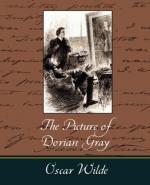He discovered wonderful stories, also, about jewels. In Alphonso’s “Clericalis Disciplina” a serpent was mentioned with eyes of real jacinth, and in the romantic history of Alexander he was said to have found snakes in the vale of Jordan “with collars of real emeralds growing on their backs.” There was a gem in the brain of the dragon, Philostratus told us, and “by the exhibition of golden letters and a scarlet robe” the monster could be thrown into a magical sleep, and slain. According to the great alchemist Pierre de Boniface, the diamond rendered a man invisible, and the agate of India made him eloquent. The cornelian appeased anger, and the hyacinth provoked sleep, and the amethyst drove away the fumes of wine. The garnet cast out demons, and the hydropicus deprived the moon of her color. The selenite waxed and waned with the moon, and the meloceus, that discovers thieves, could be affected only by the blood of kids. Leonardus Camillus had seen a white stone taken from the brain of a newly-killed toad, that was a certain antidote against poison. The bezoar, that was found in the heart of the Arabian deer, was a charm that could cure the plague. In the nests of Arabian birds was the aspilates, that, according to Democritus, kept the wearer from any danger by fire.
The King of Ceilan rode through his city with a large ruby in his hand, as the ceremony of his coronation. The gates of the palace of John the Priest were “made of sardius, with the horn of the horned [71] snake inwrought, so that no man might bring poison within.” Over the gable were “two golden apples, in which were two carbuncles,” so that the gold might shine by day, and the carbuncles by night. In Lodge’s strange romance “A Margarite of America” it was stated that in the chamber of Margarite were seen “all the chaste ladies of the world, inchased out of silver, looking through fair mirrours of chrysolites, carbuncles, sapphires, and greene emeraults.” Marco Polo had watched the inhabitants of Zipangu place a rose-colored pearl in the mouth of the dead. A sea-monster had been enamoured of the pearl that the diver brought to King Perozes, and had slain the thief, and mourned for seven moons over his loss. When the Huns lured the king into the great pit, he flung it away,— Procopius tells the story,—nor was it ever found again, though the Emperor Anastasius offered five hundred-weight of gold pieces for it. The King of Malabar had shown a Venetian a rosary of one hundred and four pearls, one for every god that he worshipped.
When the Duke de Valentinois, son of Alexander VI., visited Louis XII. of France, his horse was loaded with gold leaves, according to Brantome, and his cap had double rows of rubies that threw out a great light. Charles of England had ridden in stirrups hung with three hundred and twenty-one diamonds. Richard II. had a coat, valued at thirty thousand marks, which was covered with balas rubies. Hall described




